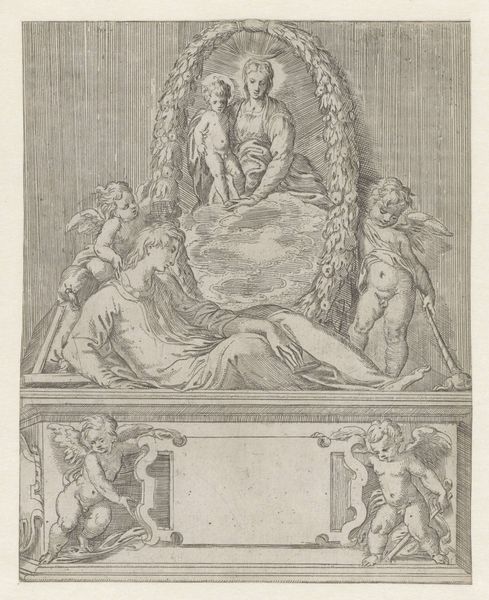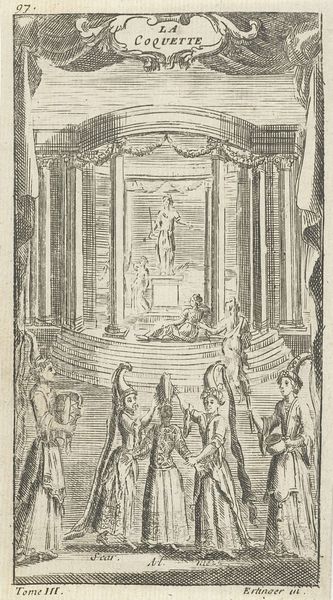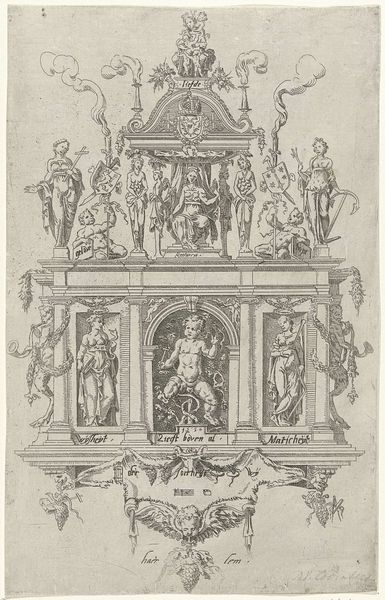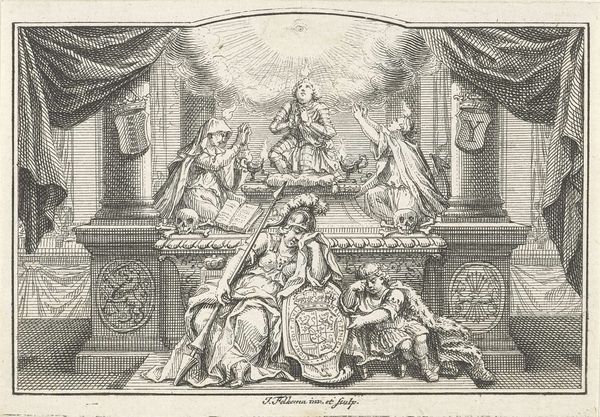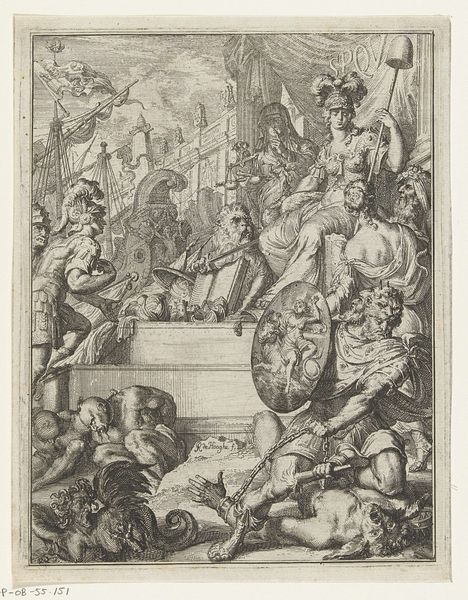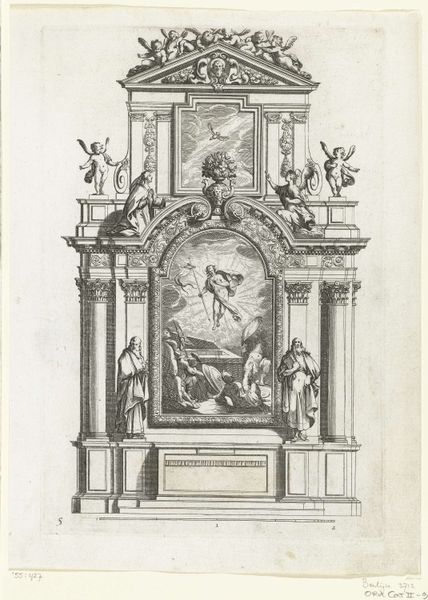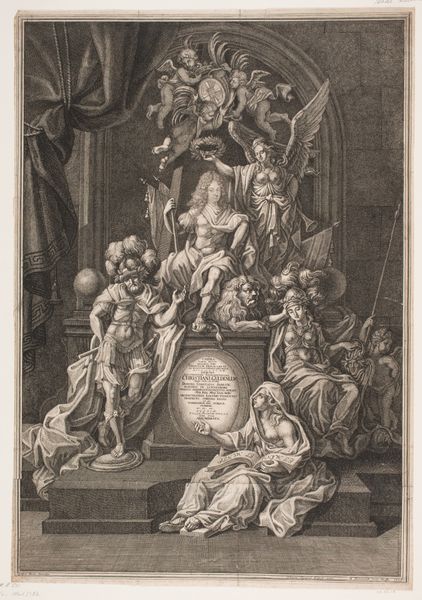
drawing, print, relief, engraving
#
drawing
#
baroque
# print
#
relief
#
old engraving style
#
figuration
#
personal sketchbook
#
pencil drawing
#
line
#
history-painting
#
engraving
Dimensions: height 301 mm, width 221 mm
Copyright: Rijks Museum: Open Domain
Editor: So, this engraving from around 1619, "Graftombe" or "Sepulchre," the artist being Angelo Falco, presents a very ornate tomb. There's this whole scene depicted, complete with figures, putti, and an effigy up top. I'm curious, with your expertise, what grabs your attention when you look at this piece? Curator: Well, for me, it's about understanding how this print functions within a system of production and consumption. Think about it: engravings were a vital means of disseminating ideas and imagery in the 17th century. Who was the intended audience, and what message was Falco trying to convey? Editor: That's interesting. I hadn't really considered its function beyond the artistic. Do you think this was maybe a preparatory sketch for a larger, more elaborate piece, like an actual tomb sculpture? Curator: Possibly. But let's also consider the materials. The engraving process itself is laborious, requiring skilled craftsmanship. The lines, the textures – they're all meticulously created. Does the medium itself, the reproducible nature of the print, democratize or commodify the idea of remembrance? Editor: So, by creating a print, it's not just about the beauty of the tomb itself but also about mass producing its image, allowing more people to have access to it? Curator: Exactly. And what does that tell us about the social and religious context of the time? Were these images primarily for the wealthy elite, or did they circulate more widely? Who had the means to commission or purchase them? These questions lead us to a richer understanding of the artwork’s place in the world. Editor: This really makes me rethink how I approach art history, I focused too much on just style and imagery! Curator: Exactly, considering art not just as an object but as a result of production gives it real depth.
Comments
No comments
Be the first to comment and join the conversation on the ultimate creative platform.

